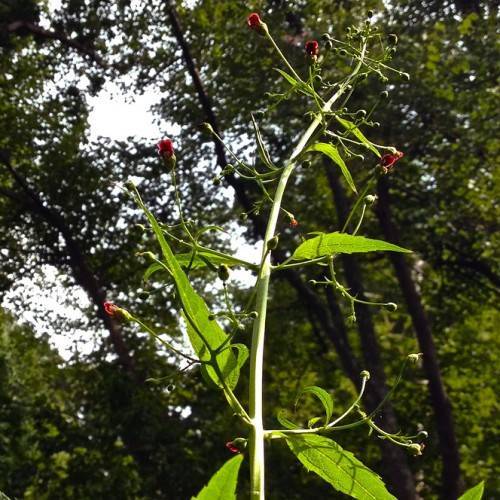
figwort
Scrophularia marilandica
Cycle:
Herbaceous Perennial
Watering:
Average
Hardiness Zone:
4 - 7
Flowers:
Flowers
Sun:
Full sun,part shade
Leaf:
Yes
Growth Rate:
Low
Maintenance:
Low
Drought Tolerant:
Yes
Salt Tolerant:
Yes
watering
Figwort plants prefer to be watered moderately throughout the growing season. During the summer months, water the plants about once a week to keep the soil evenly moist. Once the autumn months arrive, you should cut back on watering and only provide water when the soil has had a chance to dry out. During the winter months, Figwort does not need to be watered as much as it goes dormant. Make sure though that the soil does not become completely dry during this time.
sunlight
Figwort should receive 6 to 8 hours of full sunlight per day. This is best in the early morning, as the direct sun can become too intense in the afternoon. Plant the figwort in an area that receives plenty of sunlight throughout the day, such as near a south-facing window. If the figwort does not get enough sunlight, it may become leggy and weak due to lack of energy. This can also cause it to produce fewer flowers.
pruning
Figwort, (Scrophularia marilandica) should be pruned at least once a year, preferably in late winter or early spring before active growth begins. During the growth season, broken, damaged, or weak branches can be pruned out to promote strong, healthy growth. Regular pruning also helps maintain a nice shape and can control the size of the plant. For figwort, aim to remove no more than 1-third of the plant foliage each year. When pruning, look for any new branches coming up from the center of the plant, as these can be selectively reduced or removed if desired. Also remove any dead, diseased, or insect-infested branches from the plant. When pruning, be sure to use sharp pruning shears to ensure a clean cut and avoid any potential damage to the plant. After pruning, add a layer of mulch around the plant to help conserve moisture and provide nutrients for the roots.
